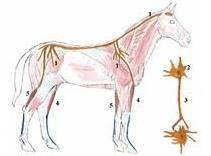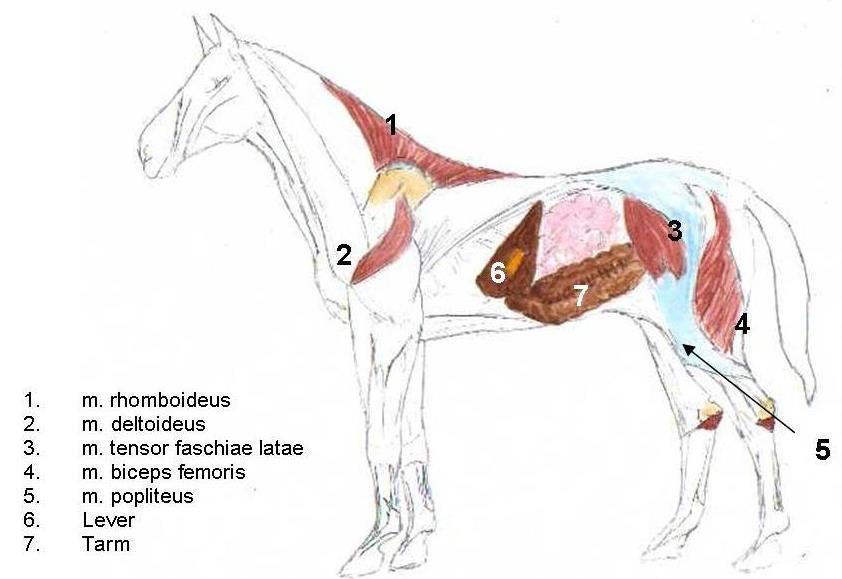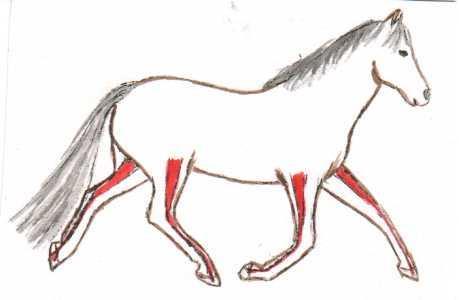DO HORSES REALLY HAVE PROBLEMS WITH THE SI JOINTS?
SI-JOINTS
The SI-joints (sacroiliac joints) are located on each side of the horses croup about one dm under the skin and are not palpable. The SI-joints are not necessarily agile; they are connected to the strong ligaments and are in bedded in large muscle groups. It is not possible to manipulate the SI-joints as they are so deep.
It is often the case that one easily uses the SI-joints in a diagnosis even though they are not the main cause behind a horse’s symptoms in most cases. Naturally, a horse can get injured if it has been involved in an accident, but it is more common that the problem is muscle-related. It could also be a poorly-built muscular system that causes issues with the SI-joints.

MUSCLE CRAMPS
The most common issue with the croup and ”SI-joints” are muscle cramps. Since all muscles are attached to at least one joint, muscle cramps limit the movement of the joints.The contraction of muscles often starts with nerve impulses. The contracted state of the muscle causes a decrease in blood flow which in turn causes an increased lactic acid that remains in the muscles and causes inflammation. Cramps often lie on one side of the joint and pull more towards one side, which can make a horse ”drag” a back leg.
In most cases the tension in the muscles can be related to the fermenting and poisoned colon that is the last step for all waste products. If detox in the intestines is not working sufficiently, the blood will pick up the toxins that are leaking out from the intestine walls and transport them to the liver. The liver – ”sifter” gets full and the toxins follow out into the blood stream. The body has its own intelligence for protecting the vital organs, like the heart, so that the blood transports the toxins and drops them off in connective tissue, fat tissue, muscle tissue, and skin. The toxins do the least damage there for the body but cause the most pain and the horse will begin to show several types of disease symptoms.

LARGE INTESTINE
The colon is through nerves and acupuncture meridians coupled with some muscle groups. The rectus abdominis supports back and core, obliquus externus abdominis bends the core to the side and pulls the back legs forward, biceps femoris extends the back leg and hip and bends the knee, and the tensor faciae lata bends the hip and extends the knee. The muscles are found on both sides on the horse, but symptoms from the intestine often starts on the right side. If it is found on the left side, the kidneys have also been loaded with toxins.

COOPERATING MUSCLES
Muscles that cooperate at certain movements are called synergists. Two muscles whose contractions cause opposite movement in a joint are called antagonists. An example of antagonist muscles are the tricep and bicep muscle. There is a constant tension with antagonistic pairs.
If the horse is tense, the muscle tone will rise and large amounts of energy will get squandered. The horse will get fatigued by the muscle tone in the different antagonistic muscles tensing against each other. Magnesium is known for regulating the muscle tone and supporting the kidney function.